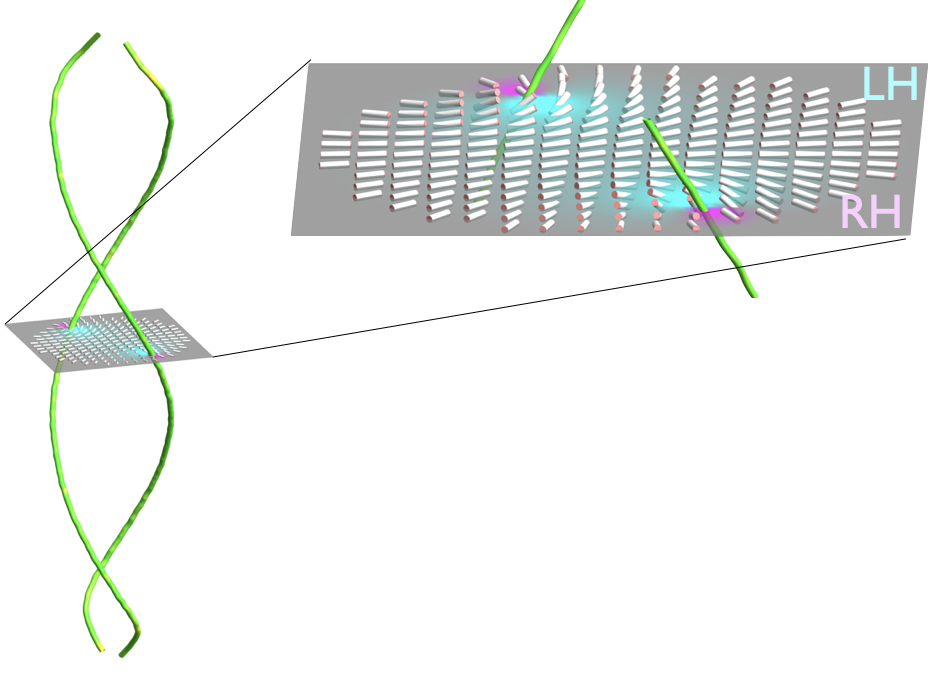Writing in Soft Matter, Daniel Beller and collaborators show that twisted double-helix configurations can arise spontaneously in common liquid crystal materials that ordinarily have no inherent tendency to twist. To observe these, Beller and collaborators at Johns Hopkins University combined computational modeling and experimental measurements to study a liquid crystal as it was heated through a phase transition from a more-ordered to a less-ordered phase. Although each phase on its own is twist-free, the study found that the phase transition generated defect lines interwound as twisted double-helices through the material, which the researchers could then stabilize and study. Computer simulations revealed the structure and causes of this material-scale spontaneously emergent chirality, a phenomenon that at the molecular scale may have helped chiral macromolecules associate into the first life forms.


